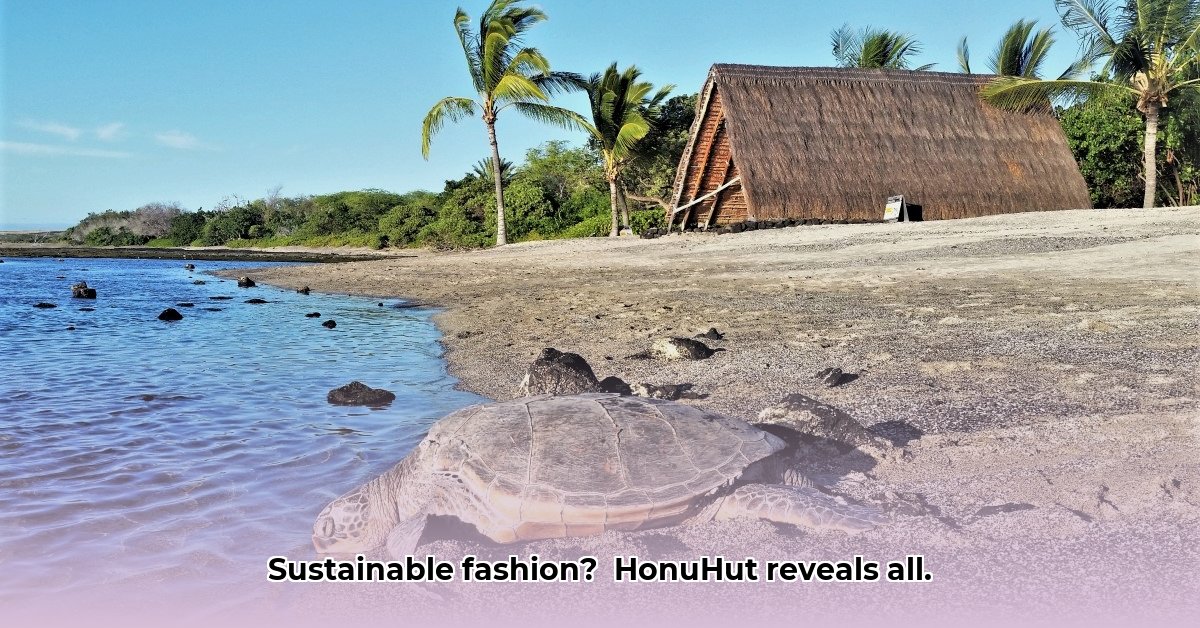
HonuHut: A Deep Dive into Sustainable Practices
HonuHut's claim to sustainable fashion requires a thorough examination beyond marketing materials. This case study analyzes their practices, focusing on transparency, ethical production, and environmental impact. We'll explore their successes and areas for improvement, providing insights for consumers and the brand itself. The lack of publicly available specific data from HonuHut itself necessitates a hypothetical framework, examining scenarios to illustrate best practices and potential pitfalls.
The Fabric of Sustainability: Sourcing and Transparency
A key aspect of sustainable fashion is material sourcing. Does HonuHut prioritize organic cotton, recycled fibers, or innovative sustainable alternatives? Transparency is crucial. A truly committed company will openly share supplier details and certifications like the Global Organic Textile Standard (GOTS). The absence of this information raises concerns about potential "greenwashing," where eco-friendly claims lack supporting evidence. Beyond material choice, HonuHut's waste management is critical. Do they implement robust recycling programs or strive for a "closed-loop" system, reusing and recycling materials to minimize their environmental footprint? This demonstrates a genuine commitment to sustainability, increasingly valued by environmentally conscious consumers.
Ethical Production: People and Planet
Sustainable fashion extends beyond environmental concerns to encompass ethical labor practices. Does HonuHut ensure fair wages, safe working conditions, and reasonable hours? Independent audits and Fair Trade certifications serve as strong indicators. Consumers are increasingly aware of the human cost of fast fashion and prefer brands prioritizing worker well-being. Manufacturing also has a substantial environmental impact. What steps does HonuHut take to reduce its carbon footprint throughout the entire supply chain—energy usage, transportation, and water consumption? These details are essential for a comprehensive evaluation of their sustainability claims.
Packaging and Delivery: The Final Mile
Packaging and shipping significantly contribute to waste and emissions. Does HonuHut use eco-friendly packaging materials, prioritizing recycled and easily recyclable options? Minimizing packaging and using plant-based inks exemplifies commitment. Shipping optimization, such as exploring carbon-neutral methods, further showcases their dedication. These details reveal a brand's holistic approach to sustainability.
Pricing and Accessibility: Balancing Act
Sustainable materials and ethical labor often result in higher prices. HonuHut must balance fair prices reflecting production costs with accessibility for a broader consumer base. This is a common challenge for sustainable brands. Transparent pricing, explaining the cost breakdown and emphasizing value through durability and ethical production, is crucial for consumer trust and understanding.
HonuHut: Hypothetical Scenarios and Critical Analysis
To illustrate the evaluation process, consider these scenarios:
Scenario 1 (Truly Sustainable): HonuHut primarily uses GOTS-certified organic cotton and recycled fibers, publishes annual sustainability reports verified by independent audits, employs robust carbon offsetting, and uses completely recycled packaging. Prices are higher than fast fashion, justified by quality, durability, and ethical production. This shows genuine dedication.
Scenario 2 (Concerning): HonuHut provides limited evidence of ethical production, lacks transparency about its supply chain, and relies on unsubstantiated marketing claims. This suggests potential greenwashing and warrants consumer caution.
Moving Forward: Areas for Improvement
Regardless of current practices, HonuHut could explore innovative sustainable materials, refine processes to further reduce its carbon footprint, enhance supply chain transparency, and invest in life cycle assessments (LCAs) to quantify the environmental impact of its products. These improvements would strengthen their commitment to sustainability.
How to Verify Sustainable Fashion Brand Claims: A Consumer's Guide
Verifying a brand's sustainability claims requires more than just marketing. Consumers should critically evaluate available data, looking beyond superficial claims. We must demand transparency and accountability from brands to promote genuine sustainable practices within the fashion industry.
Three Pivotal Points for Evaluating Sustainable Fashion Brands:
- Transparency: Brands should openly disclose their supply chains, production processes, and labor practices. Opacity often hides unsustainable practices.
- Independent Verification: Certifications like GOTS and OEKO-TEX provide crucial third-party validation of sustainability claims.
- Holistic Approach: Evaluate not just material sourcing, but also labor conditions, environmental impact throughout production and distribution, and packaging choices.
By rigorously examining these aspects, consumers can make informed choices that support truly sustainable fashion brands, driving positive change within the industry.